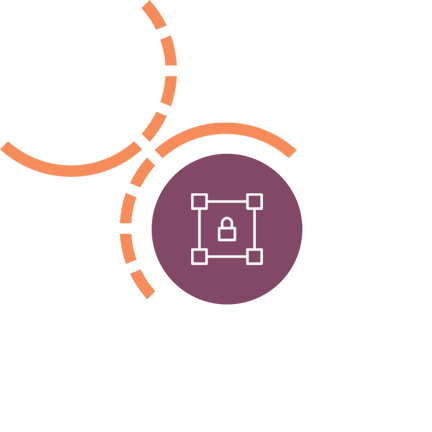MANAGED SECURITY SERVICES PROVIDER
Proactive Security. Resilient Outcomes.
For 25 years, customers have used our security-by-design services to move from security as a defensive IT responsibility to a formalized security offensive that mitigates risk and protects critical assets.




THE SECUREOPS DIFFERENCE
We're Not Your Ordinary MSSP
Our experience as a managed security services provider with proven, flexible, security-by-design services makes us uniquely qualified to grow your security maturity and optimize any tools in your cybersecurity tech stack.
Midsize and enterprise companies use our expertise and global managed security services to:
- Enable 24/7, co-owned MDR and custom SOC operations
- Strengthen their first line of defense with infrastructure security
- Stop threats with vulnerability management
We Deliver the Value Our Customers Expect.

CO-OWNED MDR
Formalize Detection Processes to Speed Response
You bring your SIEM. SecureOps brings 24/7 monitoring, detection, and response to secure your digital assets. You own the tools. We bring the expertise and coverage. We update your SIEM with the latest detection rules and threats. Rather than a sunk cost you don’t get back, MDR becomes an investment that grows as you scale.
Our goal is to help you develop formalized threat detection rules and content so you get stronger security from the systems you own. We work to match your business context and security priorities with our flexible, security-by-design services.
Andrew Morrison
Senior SOC Manager, SecureOps


CUSTOM SOC SERVICES
24/7 Monitoring, Detection, and Escalation of True Alerts
Outsource exactly what you want. We'll deliver using your tools and processes. Our security-by-design services protect your critical data and perimeter with our cybersecurity experts from Level 1 to Level 3. Add detection engineering for a proactive approach to emerging threats with a rapid response plan to increase your security maturity.
Our team of experts provide strategic guidance across a wide range of technologies, and are deeply committed to our customer’s success. We become an extension of your team, standardize your processes, and help you build the resilience needed to reduce risk and improve your security posture.
Patrick Ethier
CTO, SecureOps


INFRASTRUCTURE SECURITY SERVICES
Strengthen Your First Line of Defense
Our 24/7 network services address infrastructure security for traditional to Next-Gen Firewalls, remote access VPN, network segmentation, your implementation of SASE, and more. We troubleshoot, manage your device configurations, and tune policy to strengthen resilience.
We use a lot of automation, but we use it in a controlled way that won’t impact services, quality, or uptime for your network. Our job is to help you optimize the tools you have—and then maintain that high performance.
Francois Maddison
Director of Infrastructure Support, SecureOps


VULNERABILITY MANAGEMENT
Stop Threats by Eliminating Entry Points
Scanning is a complex process that requires expertise to avoid network failure. We help you get beyond basic scanning to proactively identify weaknesses and close gaps before they're found. SecureOps' security experts help strengthen your resilience by identifying all your digital assets and prioritizing remediation efforts.
Our VM team provides both immediate and ongoing impact to raise your security status by staying ahead of threats. Our 25 years of experience in the evolving threat landscape pays off in mitigating risks other MSSPs might not discover.
Erik Montcalm
Senior VP of Services and Technologies, SecureOps


SECURITY & TECHNOLOGY EXPERTISE
Extend Your Team with Our Certified Security Experts
Quality of service delivery is a priority for SecureOps. Our wide range of expertise enables us to provide flexibility in service delivery that aligns with the security technology you’ve invested in and adapts to what your team needs to help you achieve your security goals. We also troubleshoot with vendor support teams and deal with issues often before you're aware of a problem.
What Our Customers Say
"We're not getting a robotic person who just comes in and out and works on one procedure. They're willing to share and uplift our security capability together. So frankly, although SecureOps is an outsourced provider, they don't feel like it. For all intents and purposes they are an extension of our team.”
Manager, Cybersecurity Incident Response Team
Mining Company
“We can bounce ideas back and forth about the best architecture and implementation methods. The SecureOps team’s level of knowledge and experience gives us confidence that we can rely on them to tell us what we might be doing wrong and give us recommendations on how to improve. That’s a good qualitative metric to start our partnership.”
Manager of Security Operations
Technology Company
"The services and expertise of the SecureOps Cyber Engineering resources has been exceptional. Our appreciation and respect for how they come to work daily with nothing short of their A-Game. They make a tremendous difference across our organization and I highly value working with each of them."
Director Cybersecurity Engineering
Telecom Company
Follow-the-Sun Operations for
24/7 Coverage
Use expertise from all three offices or choose the locations that serve you best.
Montreal, Canada
Prague, Czechia
Manila, Phillipines
.jpg?width=432&height=243&name=contentMediaBleed%20(1).jpg)
FROM OUR PRESIDENT & CEO, LOREN GOLDIG
Maintain the Highest Security Status Possible
“I founded SecureOps more than 25 years ago to help companies meet the challenge of never having all the information you need when you need it. We learned to excel at collecting and analyzing log data in real time and rapidly respond to it based on the security investments made by our customers.
Over the years we’ve cultivated the expertise to elevate the impact of SOC, MDR, infrastructure security, and vulnerability management services to continuously raise our customers’ security status.
Staying ahead of the evolving threat landscape is a calling that keeps us abreast of new technologies, security challenges, and proves the business value available to companies that pursue security maturity.”

The Best Way to Know if We Can Help You is to Ask Us
Talk to our security experts to explore what's possible to meet your specific information and cybersecurity needs.